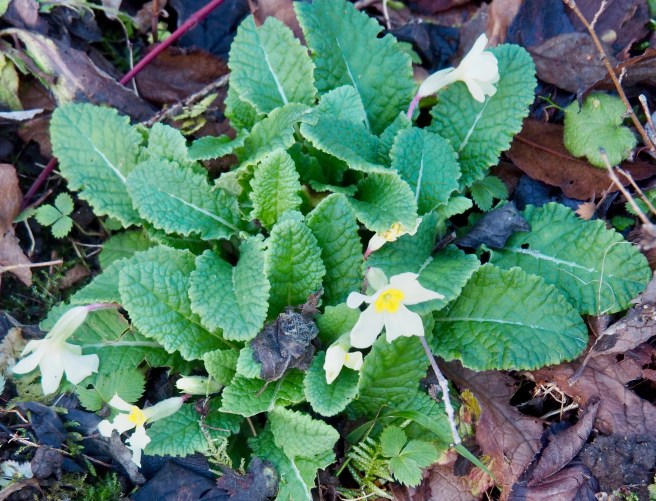On Friday we became the very happy owners of a second piece of woodland. This new wood is about 4.5 acres and adjoins our existing wood, making the whole area around 11 acres in size. This is also part of a wider woodland, a lot of which is also being managed for nature.

This new wood is very different to our original woodland. Other than a few mature trees along the boundary with the farmland, the wood was clear felled 10 years ago, the area then being replanted with mixed native trees. These are now growing very strongly and densely so that it is not yet an easy wood to wander through and there is still much we haven’t explored.


The new trees were planted with plastic protectors and a lot of these are now lying on the woodland floor. We need to pick up these up.

There is also a large open area that is packed with beautiful wild marjoram in the summer:

There is a lot of coppiced Hazel but we intend to leave the coppice in this wood for a few years. We already had probably more than we can cope with.

Some of the trees have catkins, already opened out:

And there is a Primrose in flower – a tantalising forerunner of what is to come:

Our initial plan is to clear a few pathways so that we can properly familiarise ourselves with this new wood over the coming year. We will also put up some bird boxes in time for the spring nesting season and probably dig a small pond or two.
We have been away in Norfolk for a few days. While we were away, there was a lot of Fox activity like this on the cameras in the meadows:

When I got round to looking at the videos, I realised that these skirmishes must be a prelude to mating. Later that same day, 17th January:




Fox pregnancy lasts for 53 days and so this means that the cubs will be born on the leap year day, 29th February.
The vixen is the Fox that I have been keeping an eye on because her tail looks a bit ropey and hairless and I am worried that she has mange. If there are signs that this is getting worse, I will need to break out the medicine-laced jam sandwiches once again.
The new hedgerow is completed for now, although we have decided to add some larger, root-balled Oaks at intervals along the stretch of the hedge because this is the traditional English way. The landscape gardener who did the work is coming back in a month to do this.

He has advised us to water-in these new bare-rooted trees because, surprisingly, the soil was quite dry at the depth that he was planting them. How can that be – we have had so much rain? Any water just drains away so rapidly through the chalk.

The soil might be dry a few inches down, but it is certainly rather wet and muddy at the surface as this Badger is demonstrating for us:

The soil was not at all dry in Norfolk – the underlying rock there is also chalk but there is much more of a skim of glacial deposits on top of the chalk which retain the water. Three of the reserves we visited were partially or completely closed due to flooding. The farmland hide at Pensthorpe looked out over a field that they had planted up with a mixed crop specifically to feed farmland birds through the winter. There was a large flock of Linnets feeding there:

It was lovely to see. In the summer, we have a lot of Linnets here in the meadows but they always disappear for the winter and I wasn’t sure where they went. Probably it is to places like this where they can still find food.
Pensthorpe is also carrying out conservation breeding programmes for several species – one of which is the Turtle Dove.

This bird is from their captive breeding programme but I long to be able to include a photo in this blog of a wild Turtle Dove taken in the meadows – maybe 2020 is the year. This reminds me of another job – we need to get the strip rotavated before the winter is out.
Badger cubs will be born within the next couple of weeks and there are signs that this event is not too far away. Badger mating often occurs immediately after the birth of the cubs and the nightly videos show the male Badger, Scarface, doing a bit of macho posturing and making the wickering noise that he does at such times. Moreover, there was this most unusual daytime Badger appearance:

To me, this is all heavily suggestive that the birth of the cubs is imminent, although we will have to be patient because we will not see them until April.
Here is a lovely female Green Woodpecker about to take a bath in the meadows:

And here is a female Sparrowhawk about to have a bath in the wood:

We stay in the wood for the final photo for today. I moved the Tawny-Cam trail camera a bit closer to where the Owl has been seen a few times hunting for worms. It seems that it does favour this one particular place because it was back again in the same spot last night.

I wonder what proportion of its diet is worms during the winter?
